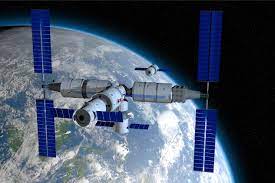China launches first module of planned space station successfully

China launches first planned module containing living quarters for three crew on a permanent space station that it plans to complete by the end of 2022.
China launched the space station’s core capsule into space via a Long March-5B rocket from the Wenchang Space Launch Center. This was the second flight of the Long March-5B. Bai Linhou, deputy chief designer of space at the China Academy of Space Technology (CAST), said the Tianhe module will serve as the management and control center of the space station Tiangong and has the facility to erect three spacecraft simultaneously.
China has named its space station as Tiangong. In Chinese, it means the palace of paradise. This multimodal space station will consist mainly of three parts, consisting of a space capsule and two labs. The total weight of all these will be around 90 MT. The space station’s core capsule is named Tianhe, which means the harmony of heaven.
Tianhe is one of the three main components of what would be China’s first self-developed space station, rivalling the only other station in service – the International Space Station (ISS). The ISS is backed by leading countries including the United States, Russia and Japan. China was barred from participating in the ISS by the US.
Tianhe will form the main living quarters for three crew members in the Chinese space station, which will have a lifespan of at least 10 years.
China on Thursday launched its own space station’s first core capsule module to compete with the US in space. In the coming days, the rest of the space station will also be delivered to space through several similar launches. China plans to launch its first indigenous space station from the end of this year. So far, only Russia and the United States have done so. However, only the International Space Station of the US space agency NASA is currently active.
